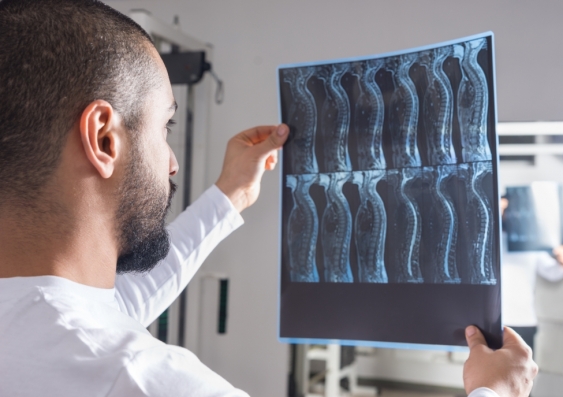Spinal cord injury research receives $6.4m funding boost
Researchers at UNSW Sydney and NeuRA are using virtual reality and electrical stimulation to restore feeling, movement and function for people with spinal cord injuries.
Researchers at UNSW Sydney and NeuRA are using virtual reality and electrical stimulation to restore feeling, movement and function for people with spinal cord injuries.

Researchers at UNSW and Neuroscience Research Australia (NeuRA) have received $6.4 million in funding for projects to provide better treatments for people with spinal cord injuries.
The funding is part of $15 million for spinal cord injury research announced by the New South Wales Minister of Health, the Hon. Brad Hazzard at the opening of NeuRA’s new Spinal Cord Injury Research Centre.
UNSW Dean of Medicine Professor Vlado Perkovic said the funding will support UNSW researchers in delivering cutting-edge, cure and care focused spinal cord injury medical research projects.
“People with spinal cord injury have devastating changes to their lives as a result. These projects are so important as they offer promise for these individuals and will lead to insights that we hope will restore function and feeling,” Prof. Perkovic said.
Associate Professor Sylvia Gustin from UNSW School of Psychology and NeuRA will receive $2.5 million from NSW Health for her RESTORE Project.
This project uses virtual reality in a way it has never been used before.
A/Prof. Gustin’s team at UNSW’s School of Psychology will develop and test the world’s first immersive virtual reality interface that simultaneously enhances surviving spinal nerve fibres and touch signals in the brain in an effort to help people regain a sense of touch and feeling throughout their body.
This project builds on a recent discovery by her team that 50 per cent of individuals with complete spinal cord injury still have surviving spinal somatosensory nerve fibres. Contrary to previous belief, these findings showed that the brain is still receiving messages from areas of the body where the sense of feeling or touch has been lost.
“It’s very exciting that we can explore how virtual reality can be used to help people regain feeling in their limbs. The outcomes of our research could lead to a cultural and scientific shift in terms of how we treat people with spinal cord injuries, and what they can expect from life after experiencing such a devastating injury,” A/Prof. Gustin said.
A project led by Professor Jane Butler from NeuRA and UNSW Medicine will receive $1.5 million to advance the effectiveness of therapeutic acute intermittent hypoxia (AIH), which may help people to improve their breathing and recover movement after a spinal cord injury.
Prof. Butler will study how this therapy affects people with a spinal cord injury to optimise treatment and better predict those who may benefit most from AIH.
“Therapeutic acute intermittent hypoxia is a cutting-edge treatment that has the potential to restore function to muscles paralysed due to a spinal cord injury by changing the way the brain and spinal cord connect,” she said.
“Our aim is to identify the best way to apply this treatment clinically in a targeted and tailored manner for people who have chronic and acute spinal cord injuries to improve their quality of life.”
More than half of the those who experience a spinal cord injury each year experience a condition known as tetraplegia, which often results in them requiring a mechanical ventilator to help them breathe, as well as respiratory and bowel complications.
Dr Euan McCaughey from NeuRA and UNSW Medicine will receive $2.4 million to undertake a program of work evaluating whether electrical stimulation of the abdominal muscles can reduce the length of time people with a spinal cord injury require the assistance of a mechanical ventilator, and whether this technology can reduce respiratory complications and improve bowel function.
“People with a spinal cord injury are up to 150 times more likely to get pneumonia than the general public and over half of them have bowel problems,” Dr McCaughey said.
“This program of work greatly expands our previous research and could significantly improve the lives of those living with a spinal cord injury.”